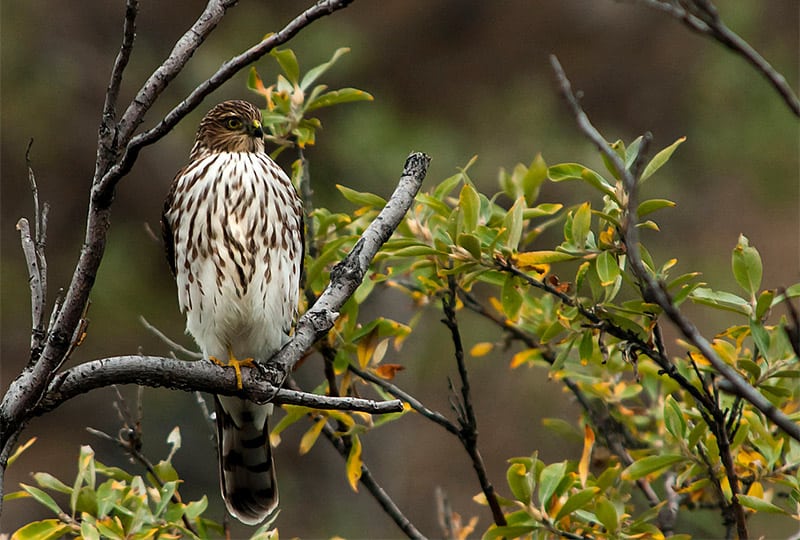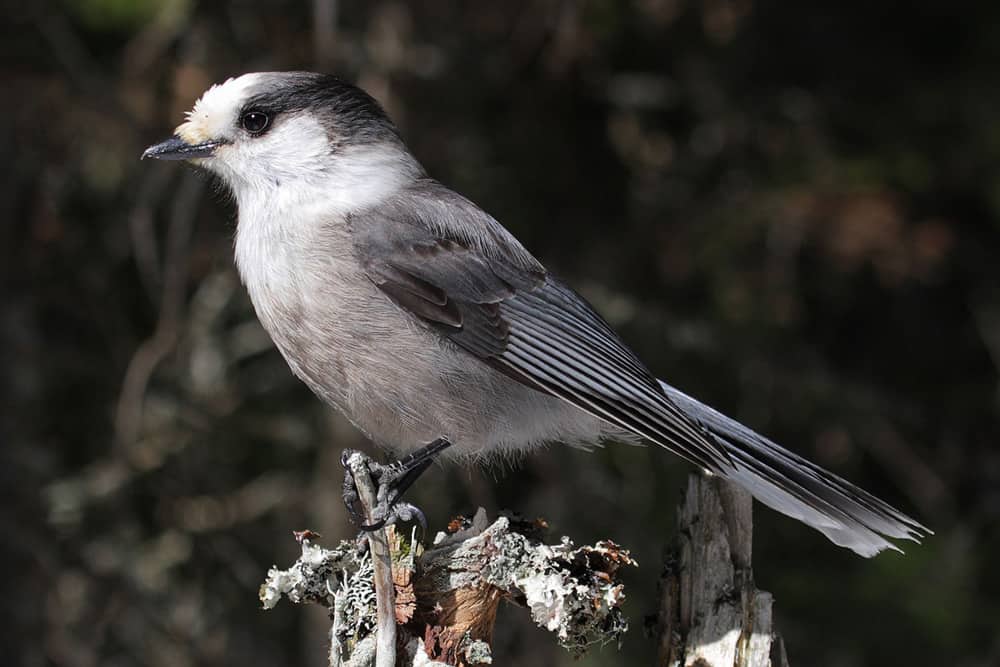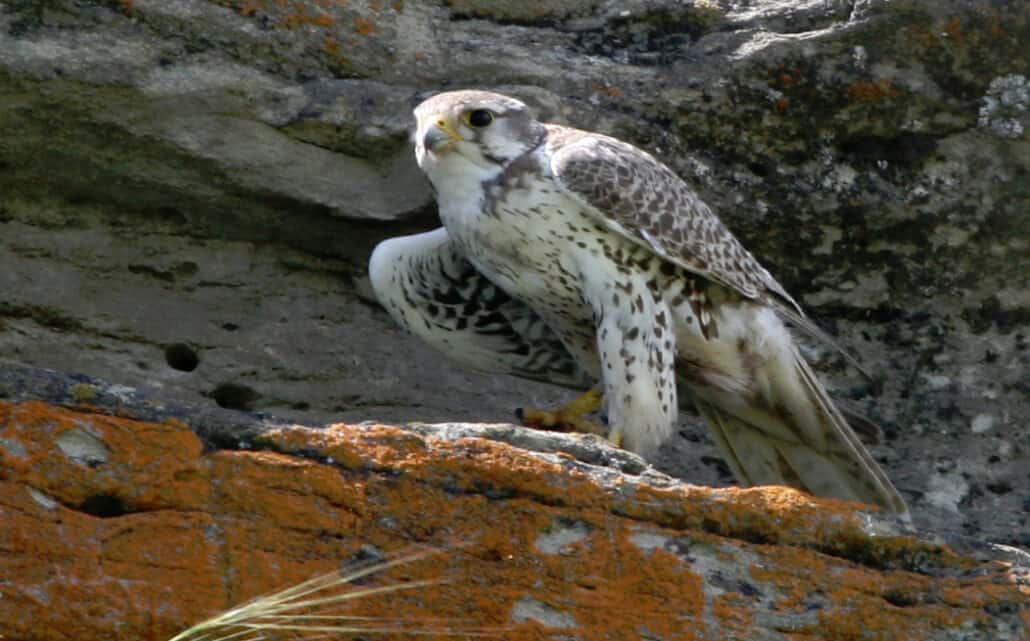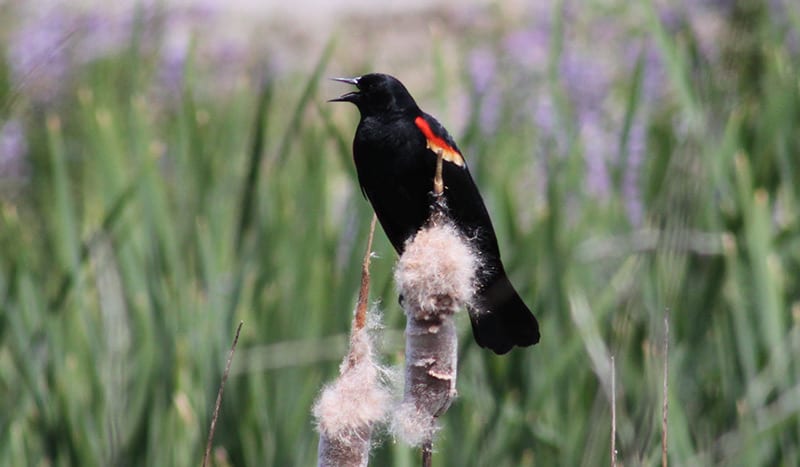Fall Birds of Michigan (September, October, November)
Although most of September is still technically summer, with the Autumnal Equinox falling around the third week, the migrations of many groups of birds is in full swing. Being the peak of migration in general, September is also an excellent month for rarities and vagrant birds to show up, potentially adding spice to a day’s bird watching. Most warblers, vireos, and thrushes peak in their migrations this month. Waterfowl migration picks up significantly at Great Lakes and inland sites.
This is an excellent month for migrating loons at Whitefish Point, and numbers of scoters and long-tailed ducks build up through the month. Hawk migration begins, and peaks quickly in September, with the large numbers of broad-winged hawks dominating the skies, with thousands of birds at well-known hawk-watching stations between the 10th and 20th of the month. Most of the sharp-shinned hawks for the season will pass through and peak numbers of bald eagles and ospreys occur in September. Shorebird migration continues, though numbers of some species begin to decline and species variety is often considerably diminished by the end of September, compared with the peaks of July and August. Ruby-throated hummingbirds continue to migrate out of the state and most will have departed by the end of September, but it is always a good idea to leave your feeder up at least two weeks after you see the last one to help late migrants.
Often overlooked by the casual observer, blue jays abruptly begin their southward migration in late September and tens of thousands of birds can be seen each day at coastal locations and hawk-watch sites. Many people think that blue jays do not migrate, and they will often visit feeders year-round, but in fact the summer birds are completely replaced with winter birds from farther north. The blue jay migration, when you’re lucky enough to witness it, is truly spectacular. Most backyards only notice a slight increase in blue jays at the feeder in late September without realizing that these are likely migrants moving through. It is a myth that leaving your feeders up will prevent hummingbirds from migrating.
Gulls begin migrating through the Great Lakes and often some of the more rare species are detected. Those charismatic, raptorial gulls, the jaegers, begin migrating offshore of a few locales on the Great Lakes during September as well, though the weather conditions they prefer often quite unpleasant for bird watchers—strong northwest winds with cooler temperatures, and sometimes even rain or snow later in October and November.
Toward the end of September northern passerines, including Lapland longspurs, snow buntings, and American tree sparrows begin moving into the Upper Peninsula, and dark-eyed juncos begin moving into the southern Lower Peninsula. In strong irruption years, the “winter finches”, including pine siskins, common redpolls, pine grosbeaks, white-winged and red crossbills, and evening grosbeaks, will begin to appear at the end of the month in the Upper Peninsula. Bird feeders in the northern parts of the state will attract many of these birds, but be prepared with plenty of sunflower seed, especially for the seemingly ravenous evening grosbeaks. This is a good time to offer high-energy foods, such as suet and peanuts, at your feeders.
With the onset of October, migration of warblers and thrushes begins to wind down, and species diversity is significantly lower by mid-month compared with the peak in September. Typically, Nashville, orange-crowned, yellow-rumped, black-throated blue, and blackpoll warblers are the only species to occur later in October, and orange-crowned actually peaks at this time, being extremely rare even in late September. The last few straggling ruby-throated hummingbirds depart before mid-month. Waterfowl migration is still going strong in October, with the arrival of many species of diving ducks into the southern portions of the state, as well as migrant Canada geese from farther north. Activity at feeders increases with the arrival of white-throated and white-crowned sparrows, dark-eyed juncos, and migrant American goldfinches.
Although the big numbers have passed by in September, the species diversity of migrating hawks is greatest in October. On rare occasions, it is possible to see 15 or more species at one of the hawk watch sites, particularly at Lake Erie Metropark. The sharp-shinned hawks are past their peak by mid-month, while Cooper’s hawks are just reaching peak. Northern goshawks move through in small numbers in October, and in good flight years (they’re somewhat cyclical) multiples can be seen some days.
Northern harriers seem to lack a peak migration time, with steady numbers from late August through early December, although late October is a good time for the later arriving males to be seen. The dashing falcons, especially peregrines and merlins, peak early in October, while American kestrels dwindle to a very few by the end of the month. October is really the month for the broad-winged buteos. Early in the month, a few straggling broad-winged hawks from the September masses can be seen, while peak numbers of red-tailed and red-shouldered hawks occur in late October.
The end of the month is also the time when the beautiful rough-legged hawk begins its migration, and everyone awaits the arrival of the first golden eagle, usually sometime after the 15th. Turkey vultures peak in mid-October, with thousands possible on a single day. In late October, appropriate weather conditions are even more important for seeing a good hawk migration. Northwest winds following the passage of a cold front are the best conditions, so avid hawk watchers stay tuned to the weather conditions all fall.
Sparrow migration peaks during this month, often with large numbers of white-throated and white-crowned sparrows, as well as song and swamp sparrows. Kinglets and brown creepers, breeders in northern Michigan, begin moving south. American pipits and horned larks move through in peak numbers.
In November rarer gulls, including glaucous and Iceland gulls, and small numbers of jaegers continue to move along the Great Lakes. More sea ducks, including scoters and long-tailed ducks, and increased numbers of diving ducks move into the Great Lakes, and many will remain until freeze-up. Many sparrows continue to migrate through the state, with significant numbers of American tree sparrow, which will remain through winter.
Lapland longspurs and snow buntings migrate in peak numbers throughout the month. In strong irruption years northern finches move into the southern portions of the state, and it is always a pleasant surprise in southern Michigan to attract one of these less common birds to your feeder. Keeping your feeders stocked and clear of snow and ice will increase your chances of attracting grosbeaks, crossbills, siskins, and redpolls. Northern owls, in good irruption years, make their first appearance in the Upper Peninsula by the end of the month.
Hawk migration continues, with decreased diversity and numbers, but with such “high quality” birds as rough-legged hawk, golden eagle, and northern goshawk to be expected, and sometimes in surprising numbers. The end of November is often quite wintry, bird-wise and weather-wise, even in southern portions of the state.





Thank you so much for this thorough guide for Michigan fall birdwatching!
If you liked this, you should check out the September/October issue of Bird Watcher’s Digest—which will mail to subscribers in mid-August, and be available in bookstores in late August. That issue will have TWO stories about birding in Michigan! Dawn Hewitt, Bird Watcher’s Digest
Thanks, Dawn!